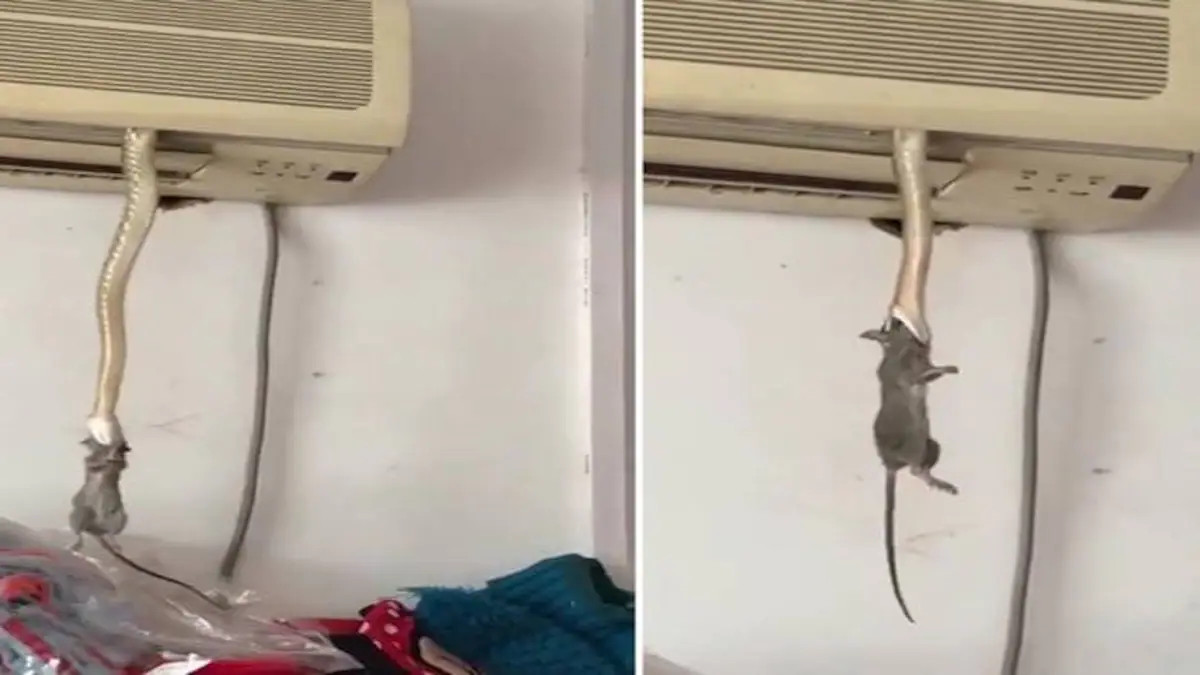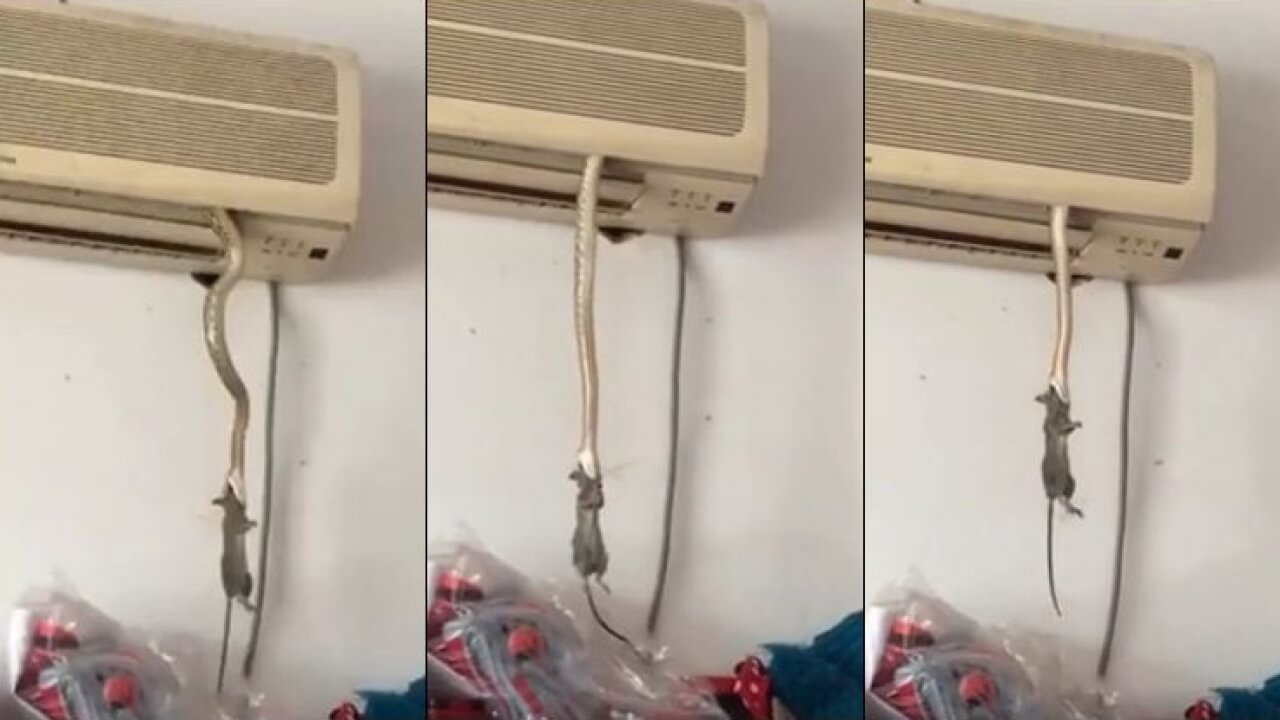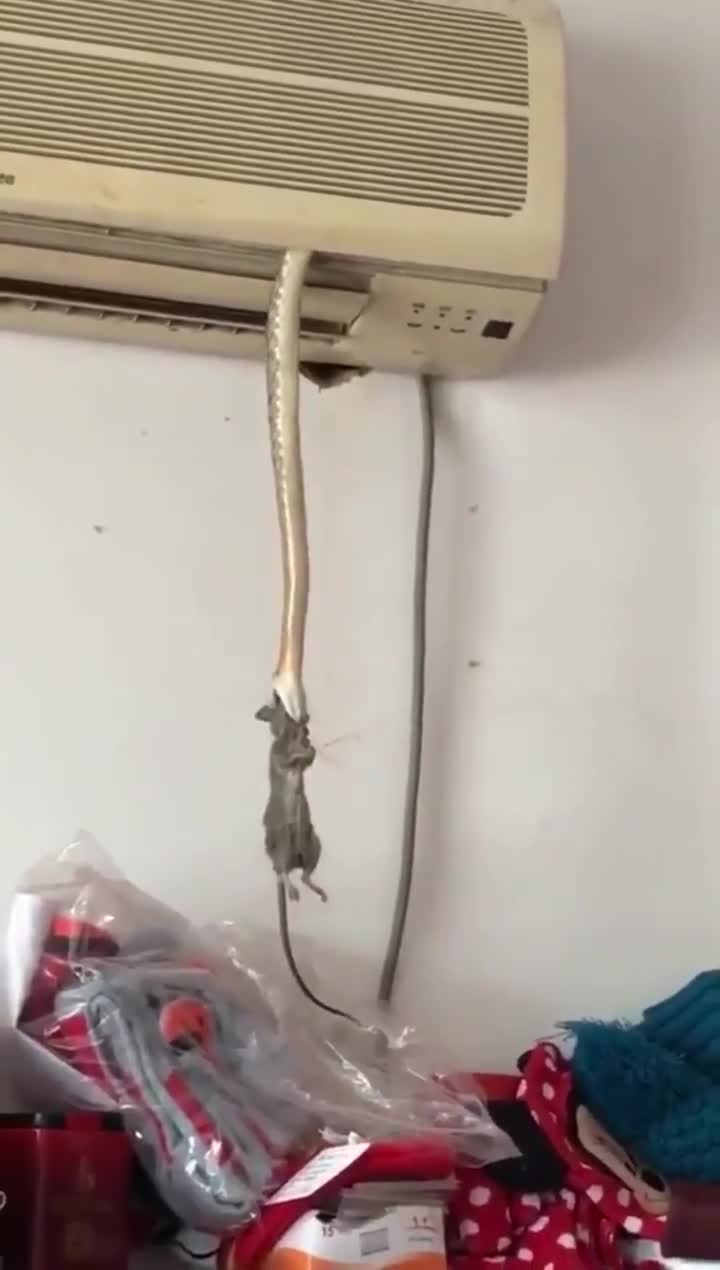The unsettling incident occurred within the confines of a seemingly safe and comfortable environment, where the air conditioner unit served as an unexpected gateway for the predatory snake. Startled observers were confronted with a terrifying sight as the reptile emerged from the cool confines of the appliance, its jaws firmly clamped around the unfortunate mouse.

The speed and precision with which the snake captured its prey left onlookers feeling a mix of horror, fascination, and sympathy for the small rodent’s plight. The snake, driven by instinctual hunger, demonstrated the ruthless efficiency of a predator, highlighting the predator-prey dynamics that shape ecosystems even in the most unexpected settings.
Experts and herpetologists rushed to the scene to assess the situation and provide insight into the behavior and species involved. While it is not uncommon for snakes to seek refuge in homes and other man-made structures, their encounters with unsuspecting prey can be startling and raise questions about human-wildlife interactions. Snakes, being opportunistic hunters, are known to exploit various entry points, including air conditioner units, to gain access to potential food sources. The ability of these reptiles to navigate tight spaces and capitalize on available resources is a testament to their adaptability and survival skills.

Understanding the motivations behind this unnerving event requires a deeper understanding of snake behavior and the underlying ecological dynamics. Snakes play a vital role in controlling rodent populations, ensuring a balance in the ecosystem. Their instinctual drive to seek out prey, even within human dwellings, highlights the delicate equilibrium between nature and our constructed environments. While the sight of a snake preying on a defenseless mouse may invoke fear and unease, it is crucial to approach the incident with an appreciation for the natural order of life. Instances like these remind us of the interconnectedness of all living beings and the complex web of predator-prey relationships that sustain the natural world.
To mitigate such encounters, experts recommend implementing measures to prevent wildlife from entering homes and buildings. This includes sealing potential entry points, such as gaps around air conditioner units, and maintaining a clean environment that minimizes attractants for both snakes and their prey.

Additionally, fostering awareness and understanding among the public regarding snake behavior and safety precautions is vital. Educating individuals about coexisting with wildlife and promoting measures that prioritize the well-being of both humans and animals can help prevent distressing encounters while preserving the invaluable role that snakes play in ecosystems. As this terrifying scene continues to haunt the memories of those who witnessed it, it serves as a stark reminder of the intricate and often unsettling aspects of the natural world. It underscores the need for harmonious coexistence and responsible stewardship of the environments we share with wildlife.
Through continued research, education, and thoughtful conservation efforts, we can strive to strike a balance that allows for the preservation of biodiversity while ensuring the safety and well-being of both humans and the remarkable creatures that inhabit our world.